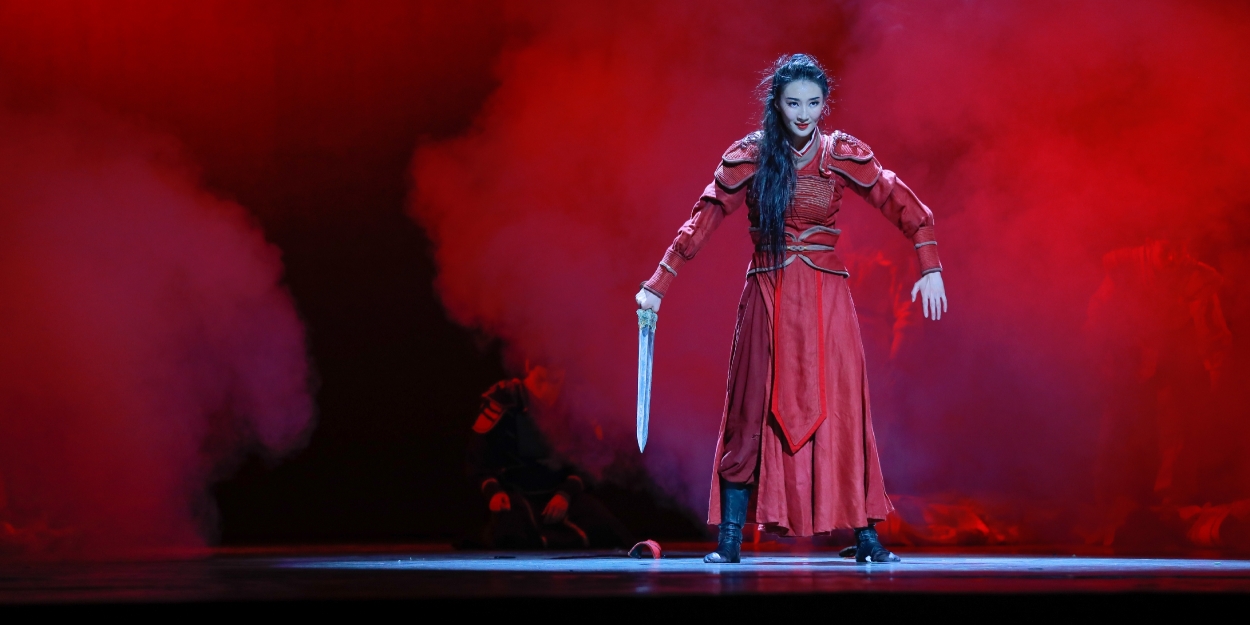Review: MULAN at Opera House/Kennedy Center
A Chinese legend, choreographed

The story of Mulan, the young Chinese woman who goes to war pretending to be male so that her father will not be drafted into the military, has been a part of Chinese culture for 1800 years or so. Therefore, having a Chinese production of it in town for a brief run serves as a palate cleanser. The two women who have choreographed it, Zhou Liya and Han Zhen, mix dance, mime, kung fu, and tableau vivant. And the precision of the large company of dancers surpasses The Rockettes (whose routines are much shorter than this ensemble's numbers). But this precision can be versatile. For example, the men in the barracks with whom Mulan must sleep (she doesn't get much!) roll over in hilarious unison, but they yawn, itch, pee, and sneeze, well, as you were, men. And in a reverie of Mulan's the women's ensemble lyrically evokes the female softness being drilled out of Mulan by basic training.
As Mulan, Hao Ruoqi gets to the essence of the character so much more effectively than a scripted actress or a singing toon can. She's a dancer/actor/martial artist who literally embodies every detail that Mulan must: courage, wisdom, self-possession, woman's intuition, and, most importantly, filial loyalty. Her performance is incomparable.
The visual elements mix authenticity (the costumes) with abstraction (the very grand, absolutely simple sets). But the star of the the scenic show is a turntable that can go 78 during battles, 45 during the march to battles, and 33 during times when Mulan is thinking about home and father or falling in love with the general (Xia Tian, a fine martial artist/dancer as General Wei). Used constantly throughout the two hour show and always imaginatively, the turntable never stops surprising; much better than a cartoon dragon, it's a silent supporting character that adds true dimension to this beautiful rendition of Mulan's tale. The musical score, largely western in character and resembling Miklós Rósza's score for Ben-Hur, is pre-recorded and much too loud. That becomes stressful after the first five minutes and alienating by the last. Way past the pain threshold. Damaging volume. Too many decibels. Can you hear me now?
China Arts and Entertainment Group’s Image China, the cultural exchange initiative which produced this Mulan, roll some credits on screens beside the stage. But without a program, the names of the composer, set designer, sound person, costume designer remain unavailable. The show's available through October 1. The second tier affords a panoramic view of the stage full of dancers, a splendid angle of vision of the turntable, and it's as far as possible from the industrial strength speakers.
Photo courtesy of Image China
Reader Reviews
Videos

